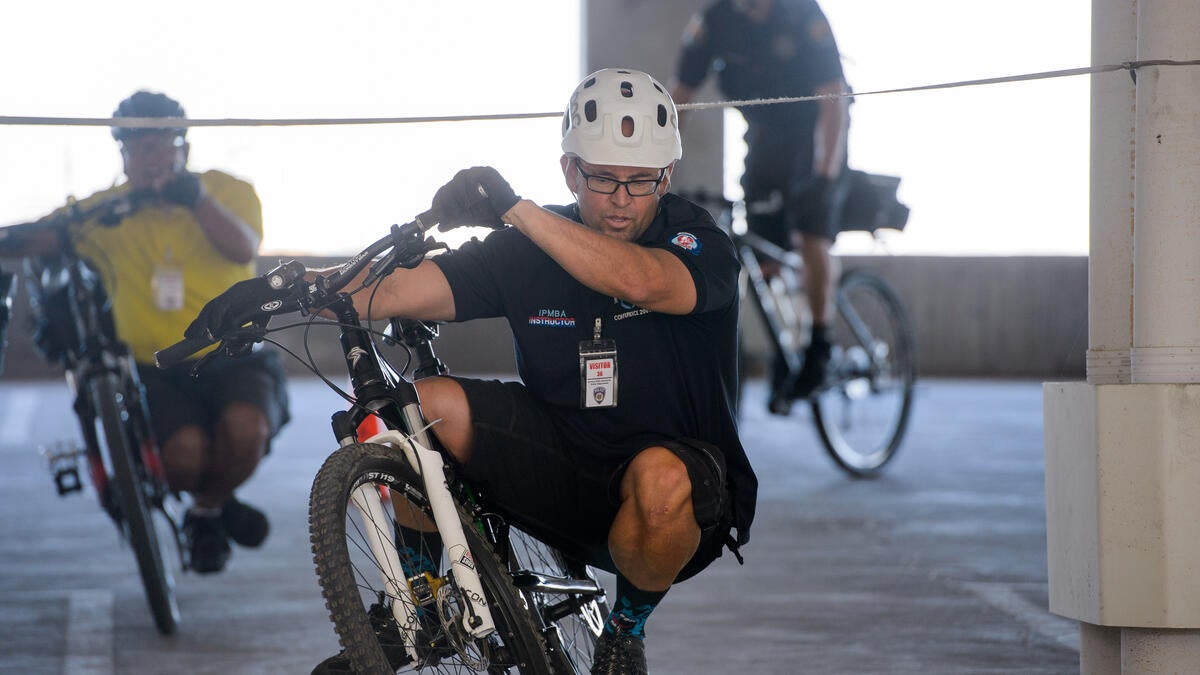Police from throughout country learn mountain bike skills at ASU

Police representatives from agencies throughout the country came to Arizona State University recently to learn the latest mountain bike procedures and training techniques.
ASU Police Department sergeant Larry Fuchtman facilitated the “train the trainers” weeklong course that taught essential police skills to trainers, according to International Police Mountain Bike Association standard practices. Emergency medical services and security personnel also took part in the course. The instructor trainers were retired police sergeant Al Simpson of Indianapolis and officer Mitch Trujillo of the Boulder Police Department in Colorado.
“I’ve been an instructor since 2003 and have a long history of bicycling in my personal and professional life, as does ASU Officer Eric Goff, who also is a trainer,” Fuchtman said. “The course is an intensive 44-hour school that brought in officers and personnel from agencies in Colorado, Utah, Georgia, Kansas, New Mexico and Texas, as well as police and security officers from Arizona.”
Public safety professionals who took the course are cyclists who are learning to teach from established International Police Mountain Bike Association practices. Classroom sessions focus on subjects such as learning how to be an engaging, effective classroom instructor, while sessions outdoors focus on teaching the varied skills that officers on bikes must possess.
While police skills such as learning to shoot or apprehending a suspect from a bicycle are taught, it is slow-speed skills that are used most often. Things like learning how to ride a bike in a walking crowd, stopping by balancing on the shoulder of your partner and weaving around tightly-placed obstacle cones are all skills that an officer may use while patrolling on a bike.
ASU is an ideal place to train, where participants can practice going up and down stairs and negotiating curbs. It’s also important to dodge pedestrians, skateboarders, other bicyclists and obstacles at times.
“We also practice how you would manage a bike during a foot pursuit and then do a running dismount to try and end it,” Fuchtman added.
Bicycles are used in police departments throughout the country when the geography and weather in a jurisdiction lends itself to this form of transportation, Fuchtman said.
Riding a bike is an effective way to gain access to a place quickly, especially at ASU where it’s easier to maneuver a bike through the malls than a vehicle. People also feel more at ease approaching an officer on a bike rather than someone enclosed in a car.
“People are much more willing to talk to me when I’m on a bike than if I was in a car. It also makes me open up more. If I’m in a car, I’m more separated from my community,” Fuchtman said.